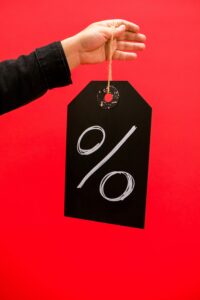 I recently wrote an article that was something of a downer because it talked about my illness. This time I wanted to look at something more uplifting, so I thought I would focus on the magic of compound returns.
I recently wrote an article that was something of a downer because it talked about my illness. This time I wanted to look at something more uplifting, so I thought I would focus on the magic of compound returns.
Most people have heard of compounding, but I regularly see confusion as to what it really means, so here are the basics.
Simple Interest
Let’s start with a really simple example – if you invest £100 into an investment that pays 5% a year of simple interest, you will always receive £5 a year. This is actually rarer than you might think, because most savings accounts automatically reinvest interest, which results in compounding (see below). As such, in order to achieve a simple return, you would need to have the interest paid into a separate non-interest bearing account for some bizarre reason.
Where you might see simple interest in the investment world is in gilts and bonds. Typically these pay a fixed interest rate based on the initial issue price for the bond, and typically bonds do not allow automatic reinvestment, so if you hold gilts the default is for the interest payments to go into the dealing cash account, which typically offers next to no interest itself. Leaving the cash there in the long term is not a good move, so you need to take some steps to make sure that your return is compounding.
Compound Return
 In really simple terms, a return compounds if you get a return on your return (and a return on that return as well, etc). The easiest way to achieve this is to make sure that your interest payment goes into the same interest-bearing account as the lump sum from which it was derived. For savings accounts this is typically automatic, in that your interest payments just get added to your overall cash balance and from that moment will accrue interest in exactly the same way.
In really simple terms, a return compounds if you get a return on your return (and a return on that return as well, etc). The easiest way to achieve this is to make sure that your interest payment goes into the same interest-bearing account as the lump sum from which it was derived. For savings accounts this is typically automatic, in that your interest payments just get added to your overall cash balance and from that moment will accrue interest in exactly the same way.
Investments are somewhat trickier in some respects, in that funds can either pay out a dividend or accumulate it, while direct shares and bonds don’t have the accumulation option.
Accumulation units in funds take the burden of making sure that your investment return is compounding away from you. In such cases, the dividend that would be paid to Income units is declared for tax purposes, but no dividend is actually paid. Instead it is assumed to have been reinvested into the exact same holdings, meaning the whole portfolio grows.
Income units are a little more complicated to use because the dividend is actually paid rather than just being notionally declared. this generates a cash payment, which by default will just drop into your trading account, which is likely to offer negligible levels of interest.
This means that where you hold Income units you will need to take extra care to make sure that your return continues to compound, either by setting up an automatic reinvestment of the dividend or by making sure that your portfolio is periodically rebalanced to “capture” the dividend cash into the overall investment strategy.
The Magic of Compounding
 In the very short term, compounding really doesn’t make a huge amount of difference, but over decades the difference becomes striking.
In the very short term, compounding really doesn’t make a huge amount of difference, but over decades the difference becomes striking.
As an example, assume an investment of £100,000 with a 5% return. If that return is simple, then after 20 years the total value will be £200,000 (the initial £100,000 plus 20 interest payments of £5,000 which are left in a non-interest bearing account). If the distributions are reinvested back into the investment portfolio to compound the return, the effect of the reinvestments would take the final balance up to £265,000. The additional £65,000 is the benefit of just compounding the return rather than allowing the cash to languish in a non interest bearing account.
The Lesson
From this you will no doubt be thinking “surely I want compound returns, so I should avoid the bonds and gilts you mentioned before”. In which case, you are partially right, in that you definitely want compounding, but those types of investment still definitely have a home in your portfolio. In particular, you can read up on my views for how to provide a retirement income using dividend-producing assets in my Hunt for Income article.
You can also get in touch to talk about how to maximise your own investment returns.

